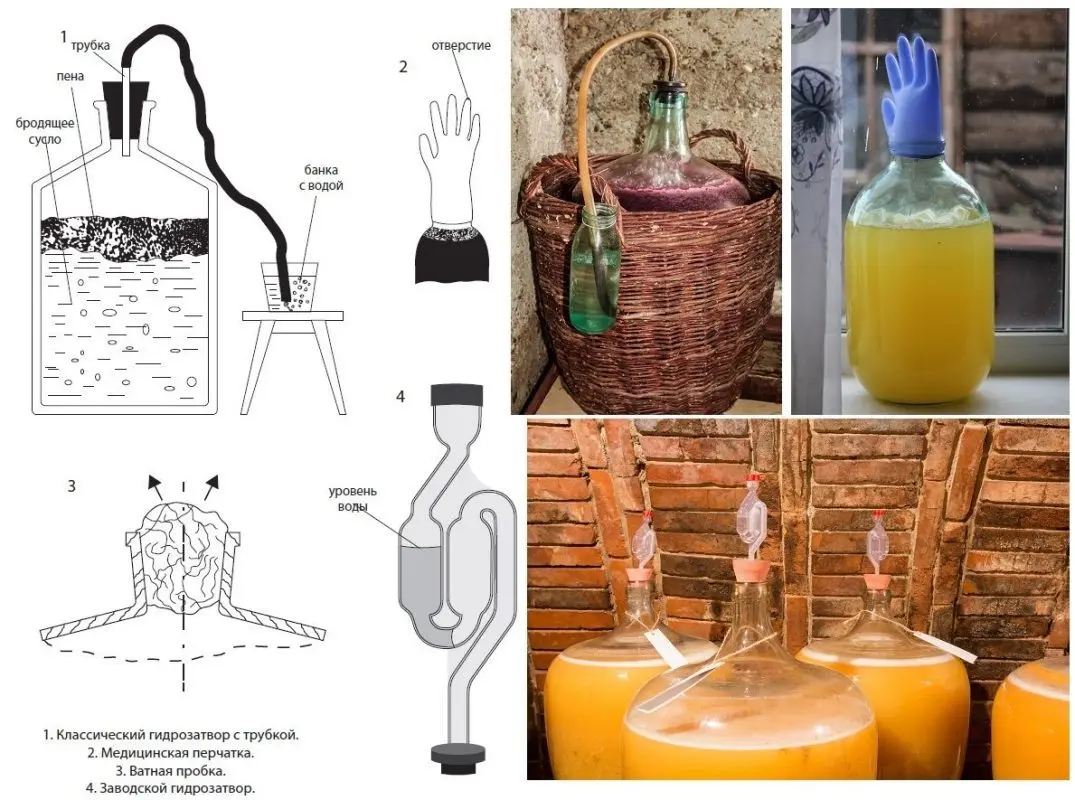Kiwi wine is light, with a slightly greenish tint, a subtle aroma and a taste characteristic of this exotic fruit with hints of gooseberries, bananas and melons.
Ripe and overripe kiwis of any variety are suitable for cooking. Fruits should not contain rotten, spoiled and moldy parts. Even a small amount of bad pulp can spoil the entire batch of drink. In order not to infect the wort with pathogenic microorganisms, it is important to work with raw materials only with clean, well-washed hands, and sterilize all used containers with boiling water and wipe dry with a clean cloth.
Ingredients:
- kiwi fruits – 2 kg;
- water – 4 liters;
- sugar – 1,25 kg;
- wine yeast or sourdough – per 7 liters of must.
Kiwi wine recipe
1. In the absence of wine yeast, 4-5 days before working with raw materials, prepare wine sourdough from raisins, grapes or other berries. Detailed instructions are described in the link.
2. To release all the sugars from the pulp, put the kiwi in a plastic bag and leave it in the freezer for 2-3 hours. This step is optional, but recommended.
3. After defrosting, peel the kiwi, gently chop the flesh with your hands, being careful not to crush the bones, otherwise the wine will be slightly bitter.
4. Fold the prepared kiwi pulp into an enameled or plastic container with a wide neck. Add all the water and 625 grams of sugar (about 50%). Add sourdough or wine yeast. Stir the wort to a homogeneous consistency, then tie the neck of the container with gauze to protect against insects.
5. Leave the must for 3 days in a dark room with a stable temperature of 18-28 °C. So that the future wine does not turn sour, mix thoroughly every 8-10 hours, drowning the pulp in the juice – the floating particles of pulp. After 4-12 hours from the moment the yeast is added, signs of fermentation should appear: foam, hiss and a slight smell of sour. This means everything is going well.
6. Strain the wort through gauze folded in 2-3 layers, squeeze the pulp dry, it is no longer needed.
7. Add 375 grams of sugar (30%) to the liquid part, mix.
8. Pour the wort into a fermentation tank, fill to a maximum of 75% of the volume to leave room for foam and carbon dioxide. Install a water seal of any design on the neck; you can use a medical glove with a pierced hole in one of the fingers.

9. Transfer the container to a dark room (or cover with a thick cloth) with a temperature of 20-28 ° C, leave until the end of fermentation.
10. After 8 days from the date of installation of the water seal, add the remaining sugar – 250 grams (20%). To do this, pour 250 ml of fermenting juice into a separate container, dilute sugar in it, and pour the resulting syrup back into the fermentation container and close it with a water seal.
Depending on the yeast and temperature, homemade kiwi wine ferments for 35-60 days. Readiness is determined by the absence of gas release from the water seal (deflated glove) for several days, clarification of the wort and the appearance of a layer of loose sediment at the bottom.
If fermentation does not stop after 50 days from the date of installation of the water seal, the wine should be drained from the sediment and allowed to ferment at the same temperature.
11. Pour the young fermented wine through a straw into another container, trying not to touch the sediment. Try, if desired, sweeten with sugar to taste and (or) fix with vodka (alcohol) in an amount of 2-15% of the volume. Fortified wine is better stored, but harder in taste.
12. Pour the wine into aging tanks, trying to fill to the top so that there is no contact with oxygen. Seal tightly and transfer to a refrigerator or cellar with a temperature of 2-16 ° C for maturation. If sugar was added at the previous stage, it is better to keep the wine under a water lock for the first 7-10 days in case of repeated fermentation, then close it tightly.
13. Aged kiwi wine for at least 6 months to improve taste. Each time a precipitate appears with a layer of 2-4 cm, filter the drink by pouring it through a tube into another container.
14. When sediment no longer appears, the finished wine can be bottled for storage. Shelf life in a dark room at a temperature of 2-16 ° C – up to 3 years. Fortress – 10-14%.










